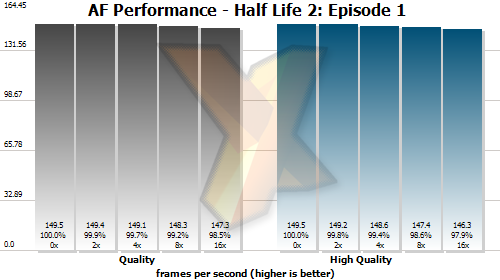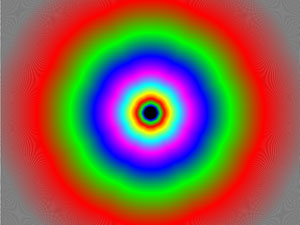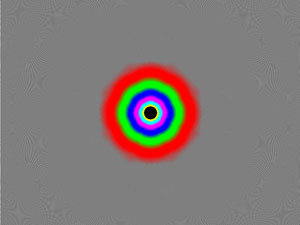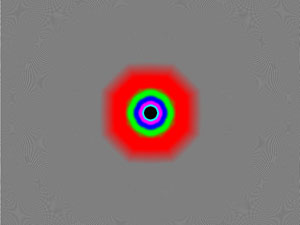Image Quality Analysis - Anisotropic filtering tests
G80 offers the least angle-dependant method of choosing the degree of anisotropic filtering to apply to pixels, available on any consumer hardware ever released. Quite a statement to be able to make. Its default Quality setting still applies the now-famous 'brilinear' optimisation (trilinear MIP filtering on the first texture stage, bilinear on all others), which is a nefarious optimisation in our book given you can't always rely on the primary texture living in that first stage, but at least the hardware and current driver conspire to be rid of undersampling across MIP boundaries which is the more serious problem afflicting modern hardware. Further, High Quality mode turns off that texture stage optimisation so the application gets the filtering it wants on all stages, the hardware not interfering.The advent of such a high level of angle-invariance (it's not completely invariant) and default filtering quality couldn't come soon enough, as out-of-the-box experience, and it's a huge step forward for the default fidelity of everyone's pixels. There'll be a certain Greek reader of ours that'll be weeping underneath a burning GeForce4, as something new finds top spot in his filtering heart.
AF is available at up to 16x again, and the famous filtertest patterns look exactly like this: (starting with the default Quality, click for the full sized uncompressed version)
Default Quality filtering output
Default High Quality filtering output
Discussion
The filtering quality with the review drivers and those that'll be posted for public consumption on launch day is simply excellent. Out-of-the-box quality is the best seen on any hardware to date and it's a simple control panel click or two to get the maximum the hardware is capable of. In shipping drivers even High Performance mode, which you'll realistically never ever use, has the same angular non-dependency as High Quality, with other optimisations being applied instead. And the performance hit at high resolution in a modern games title? Let's show you.
While it's obvious that you can't have texture filtering for free across the board at any resolution (G80's horsepower is finite, honest), those results -- captured at 1920x1200 -- show that it shouldn't be a stretch to ask your game to request its highest quality filtering levels and let G80 do the rest.
We could show you all the screenshots in the world of apparent filter quality, but static screenshots don't always do a brilliant job. You can see the theoreticals up above, so probably the best thing for us to show you would be motion video. We have a pair, taking inside Half-Life 2, which are designed to highlight the default quality's lack of MIP boundary shimmering, so if you'd like a look then email ryszard@hexus.net and be sure and have the latest FRAPS installed. It looks goooooooood in everything we've tested.
Time for the game performance goodies, finally.



















